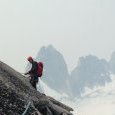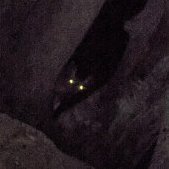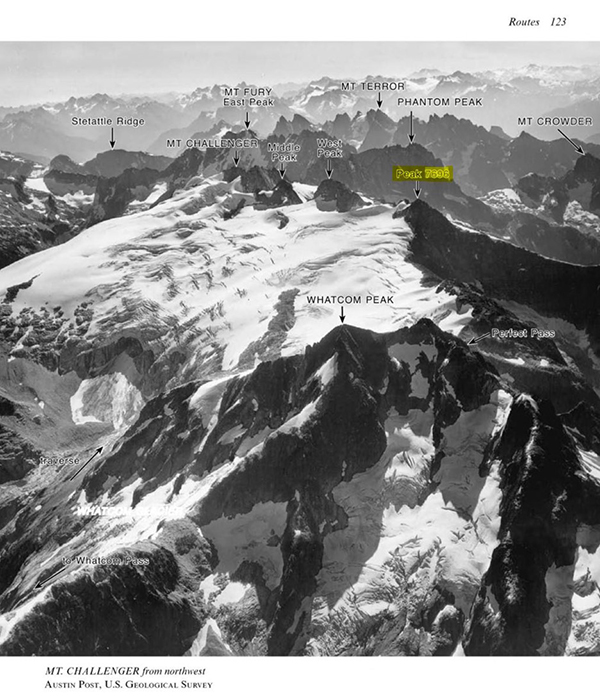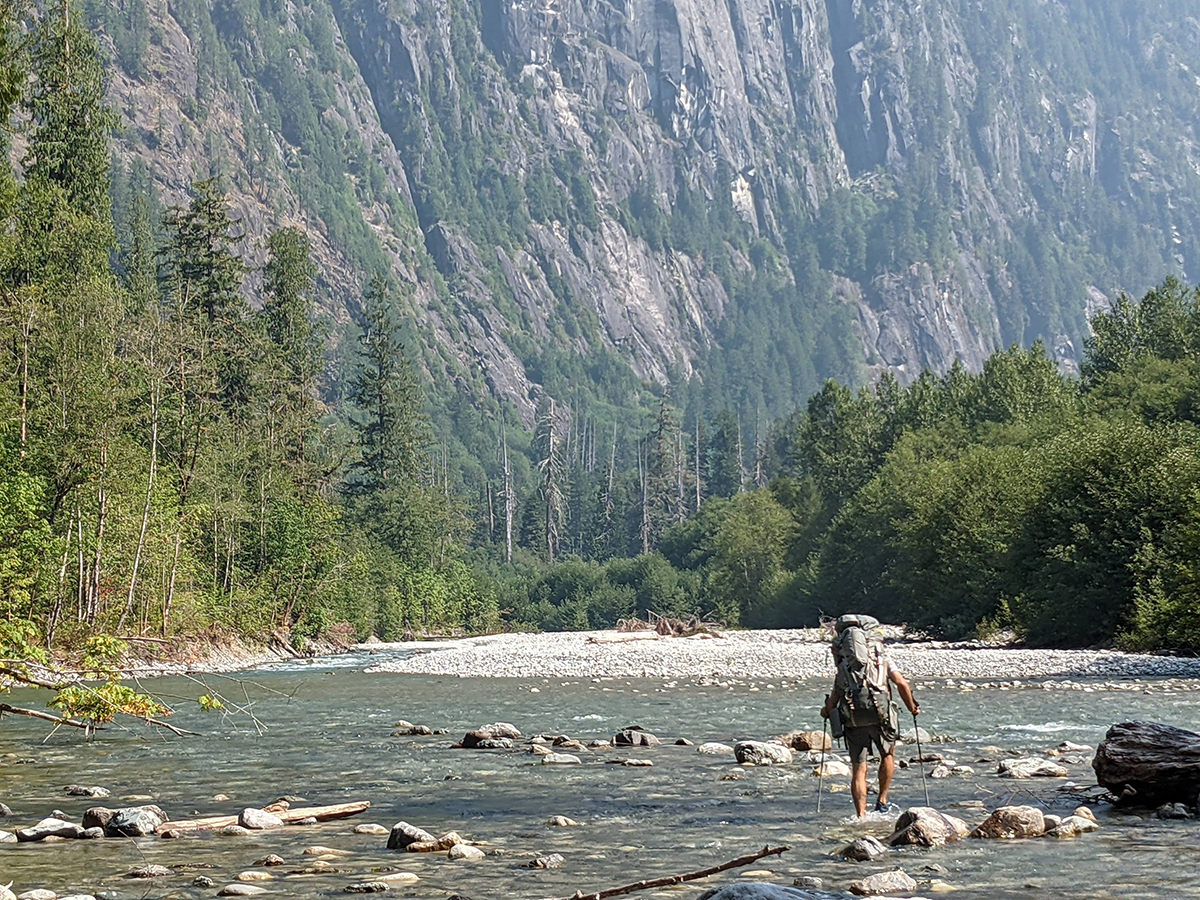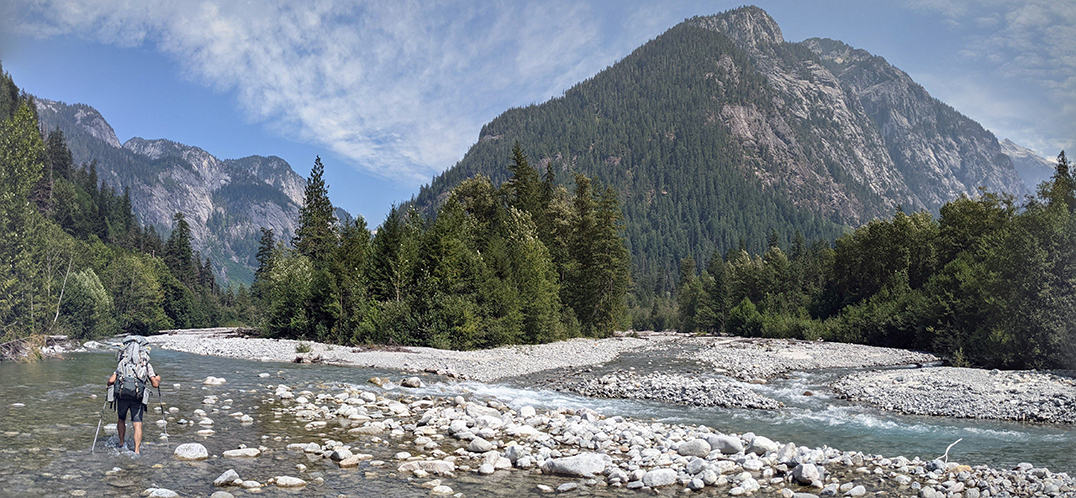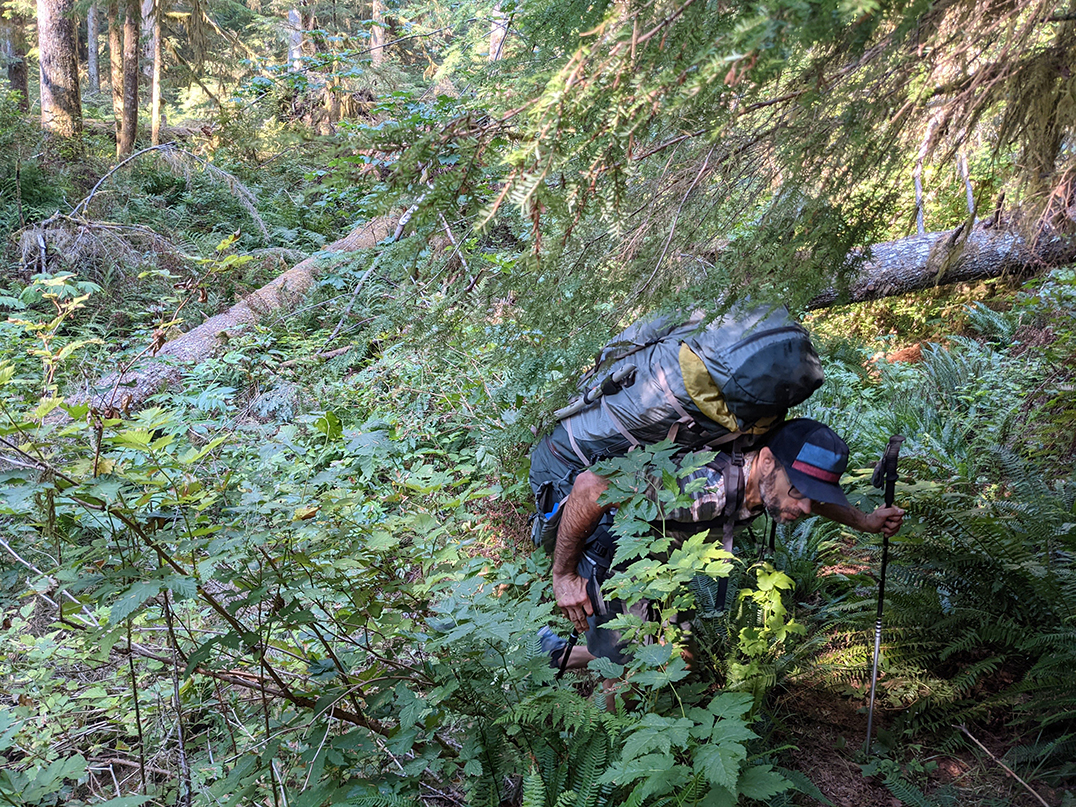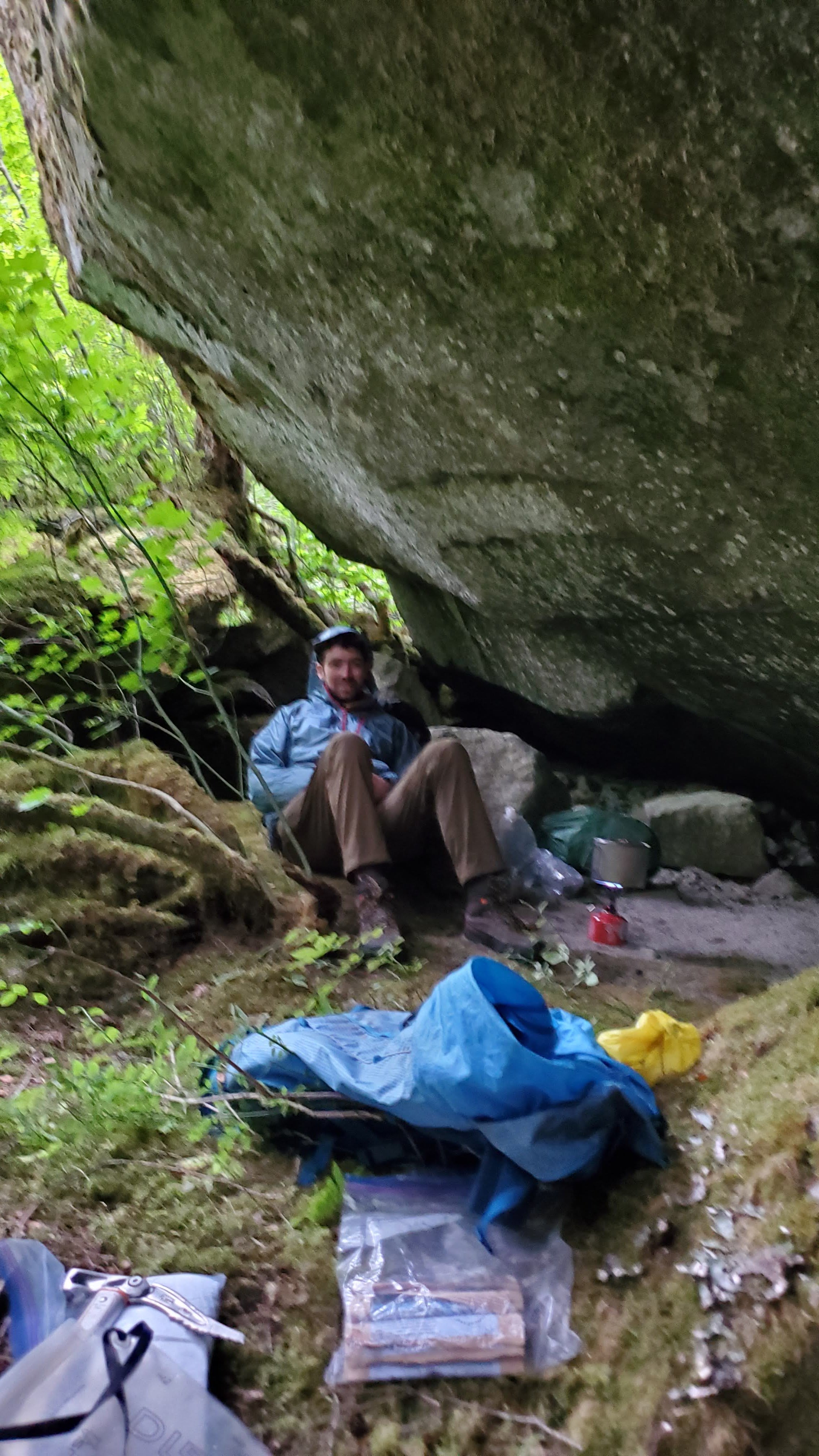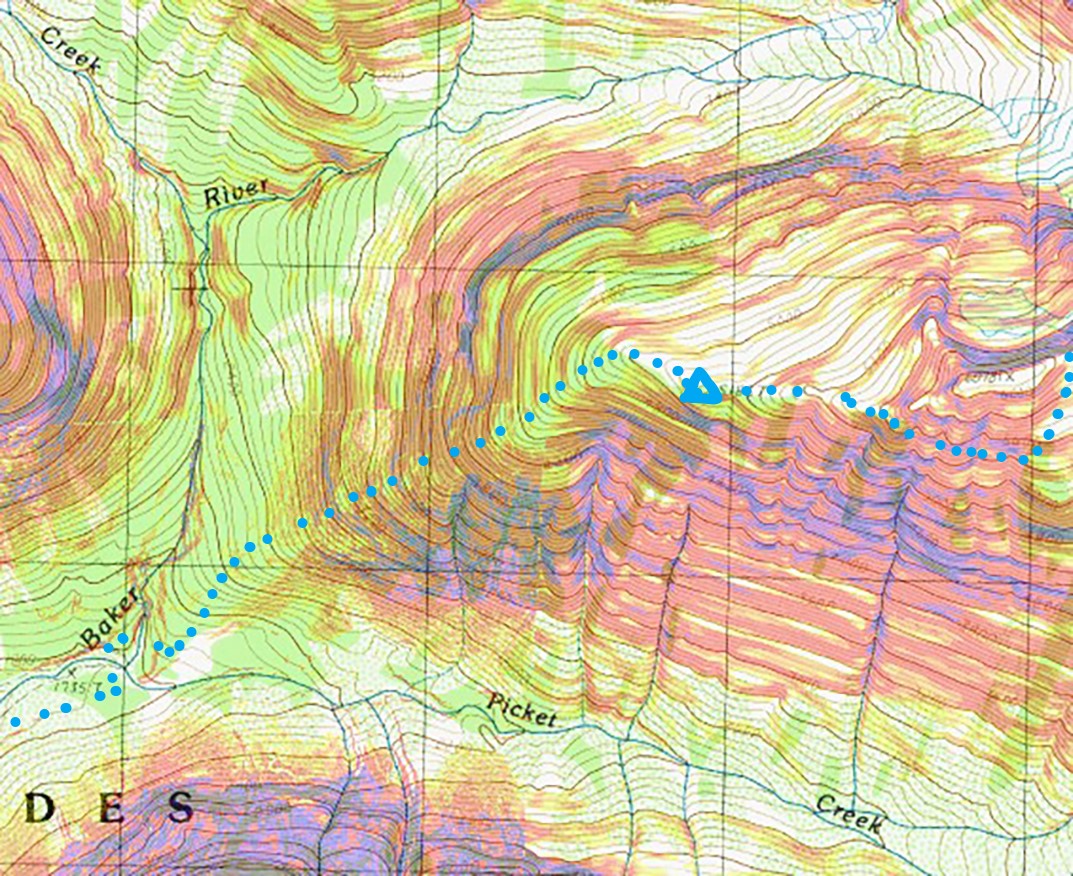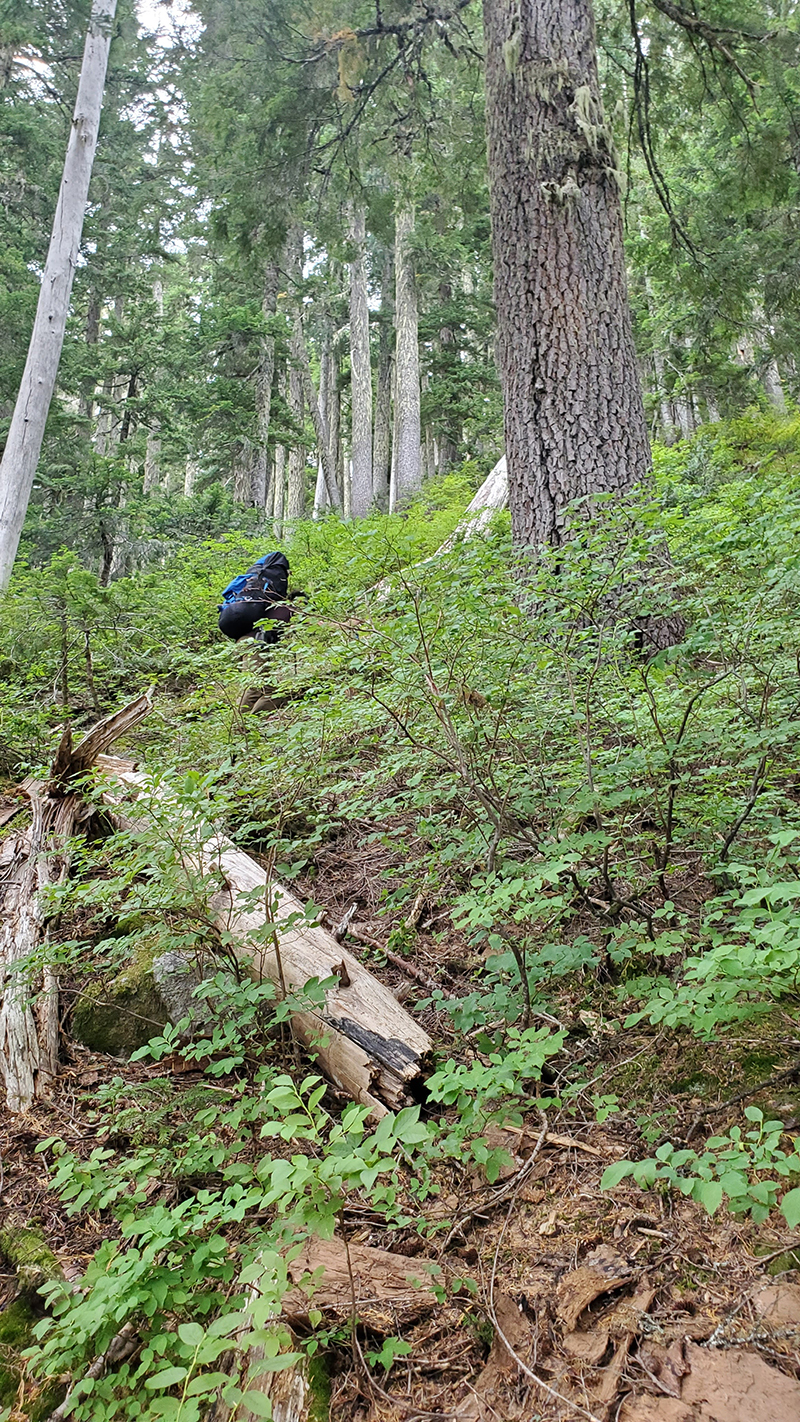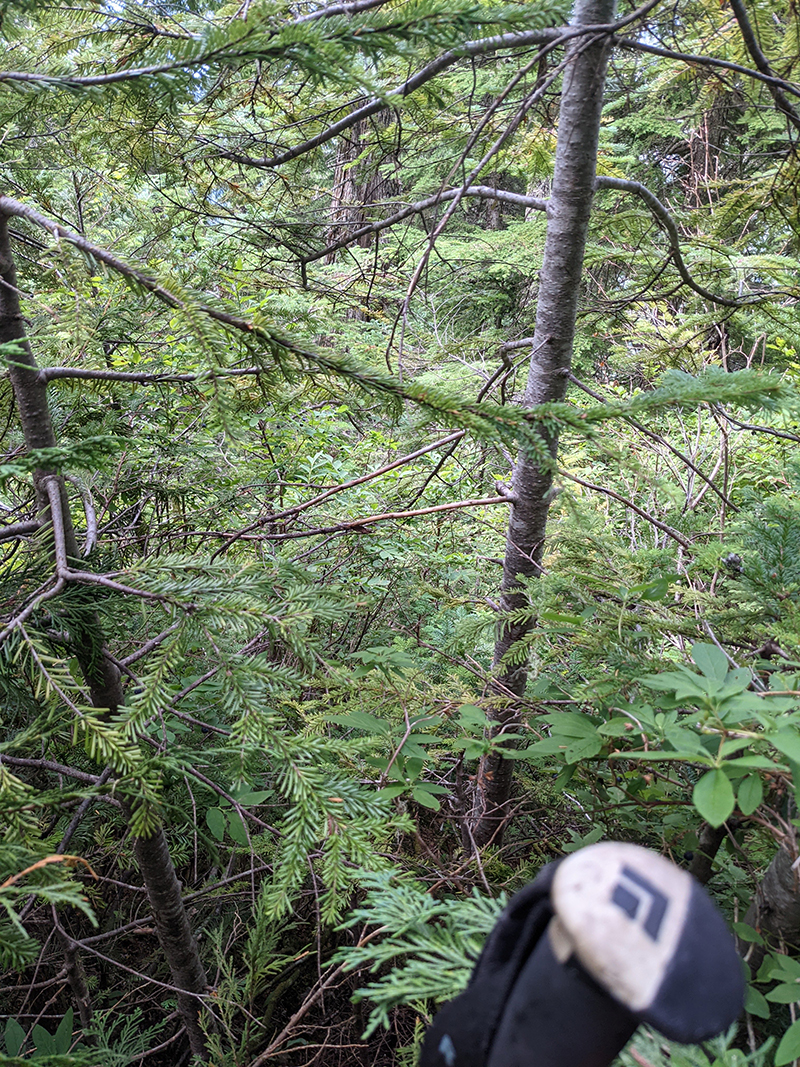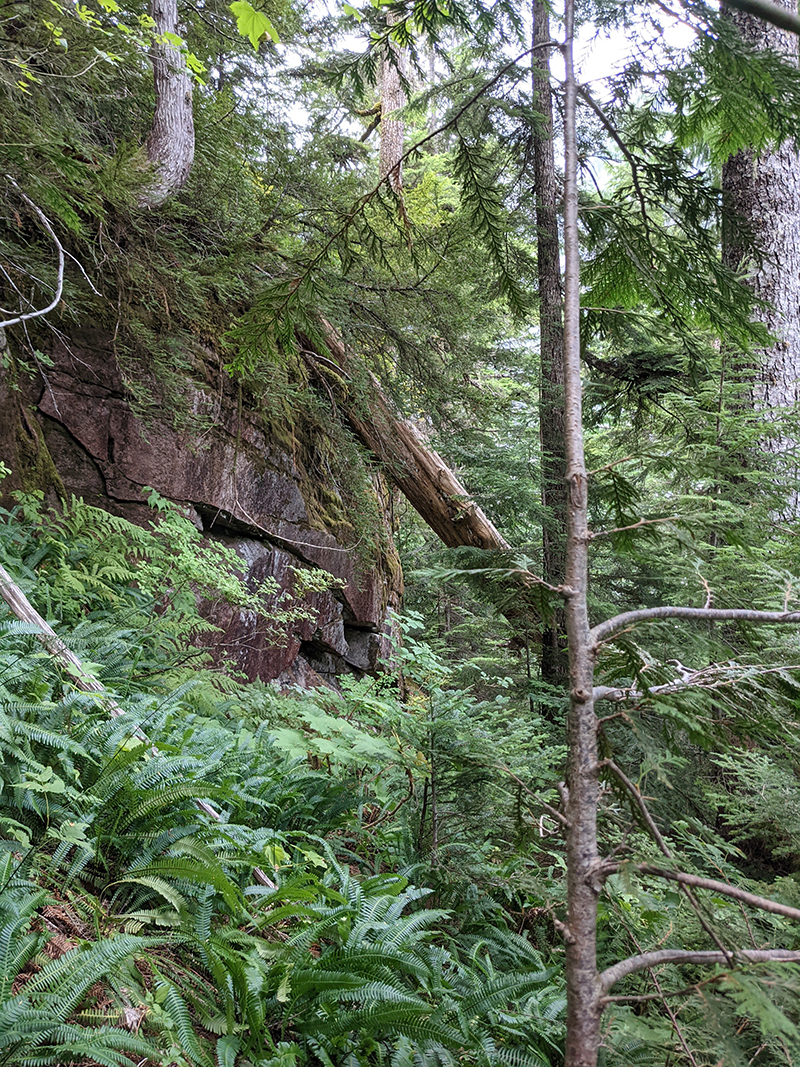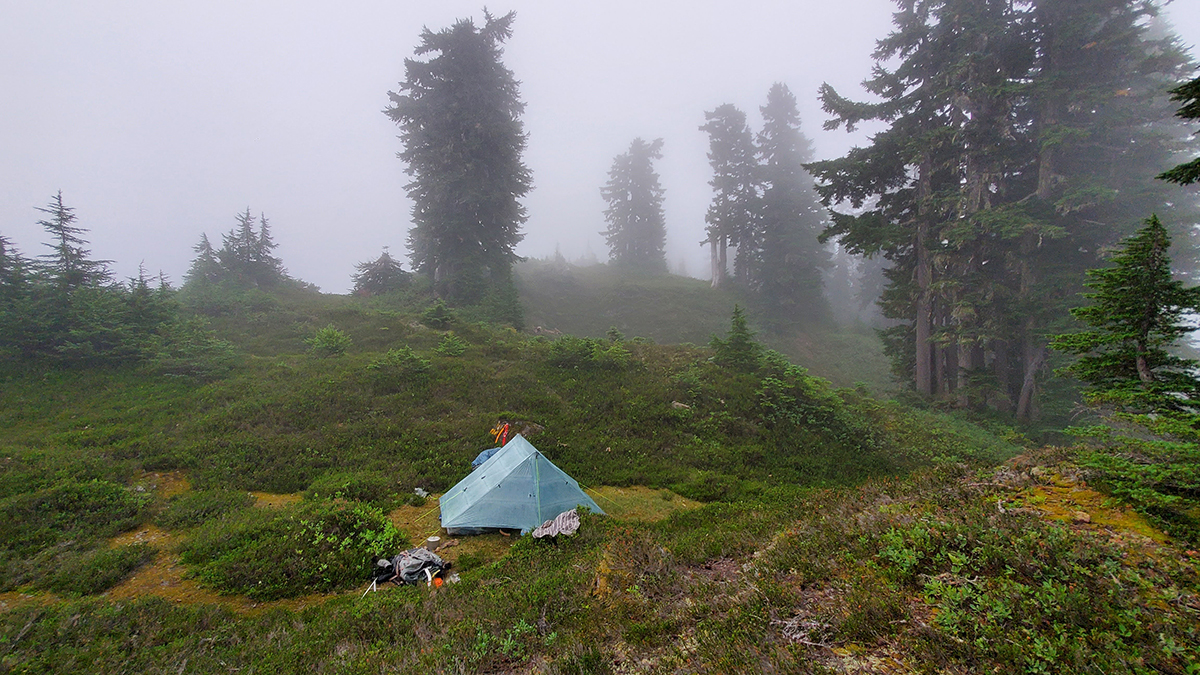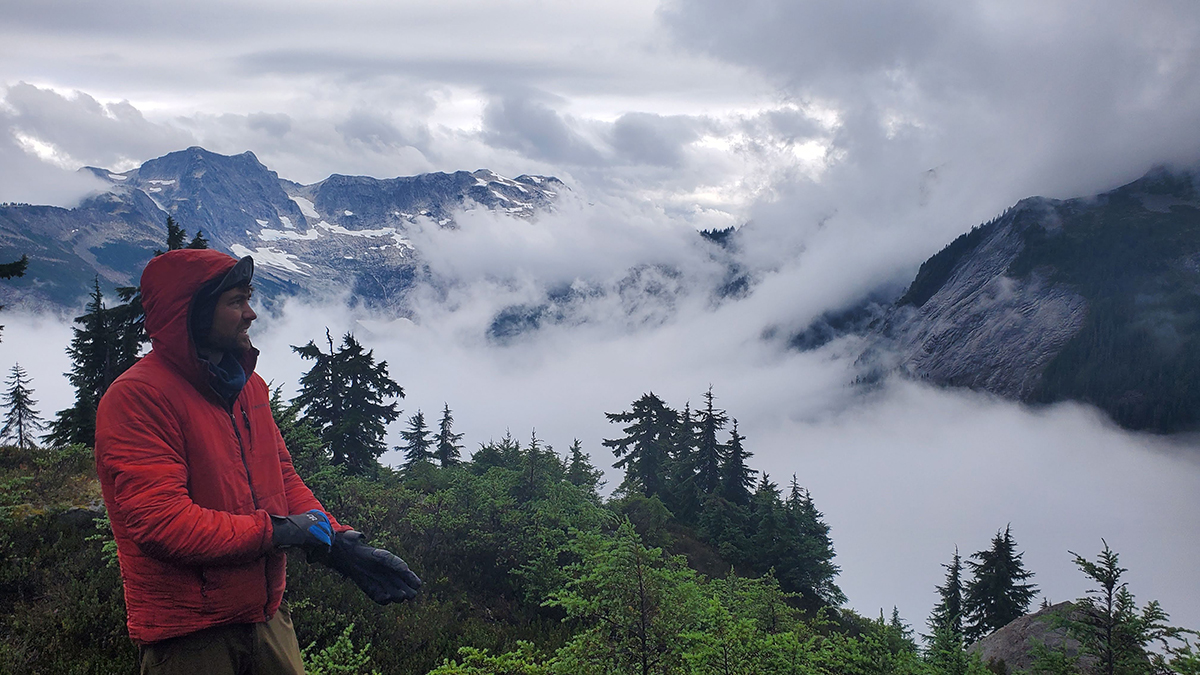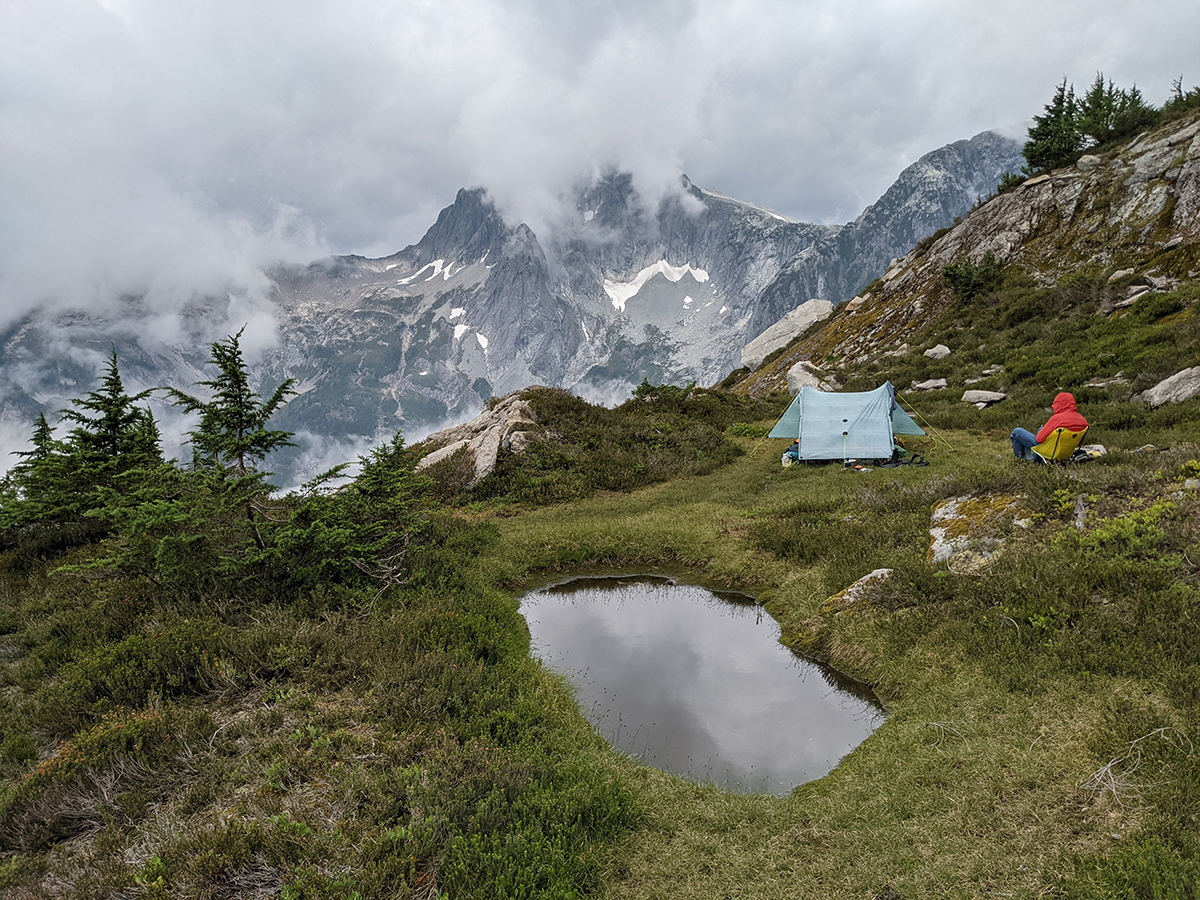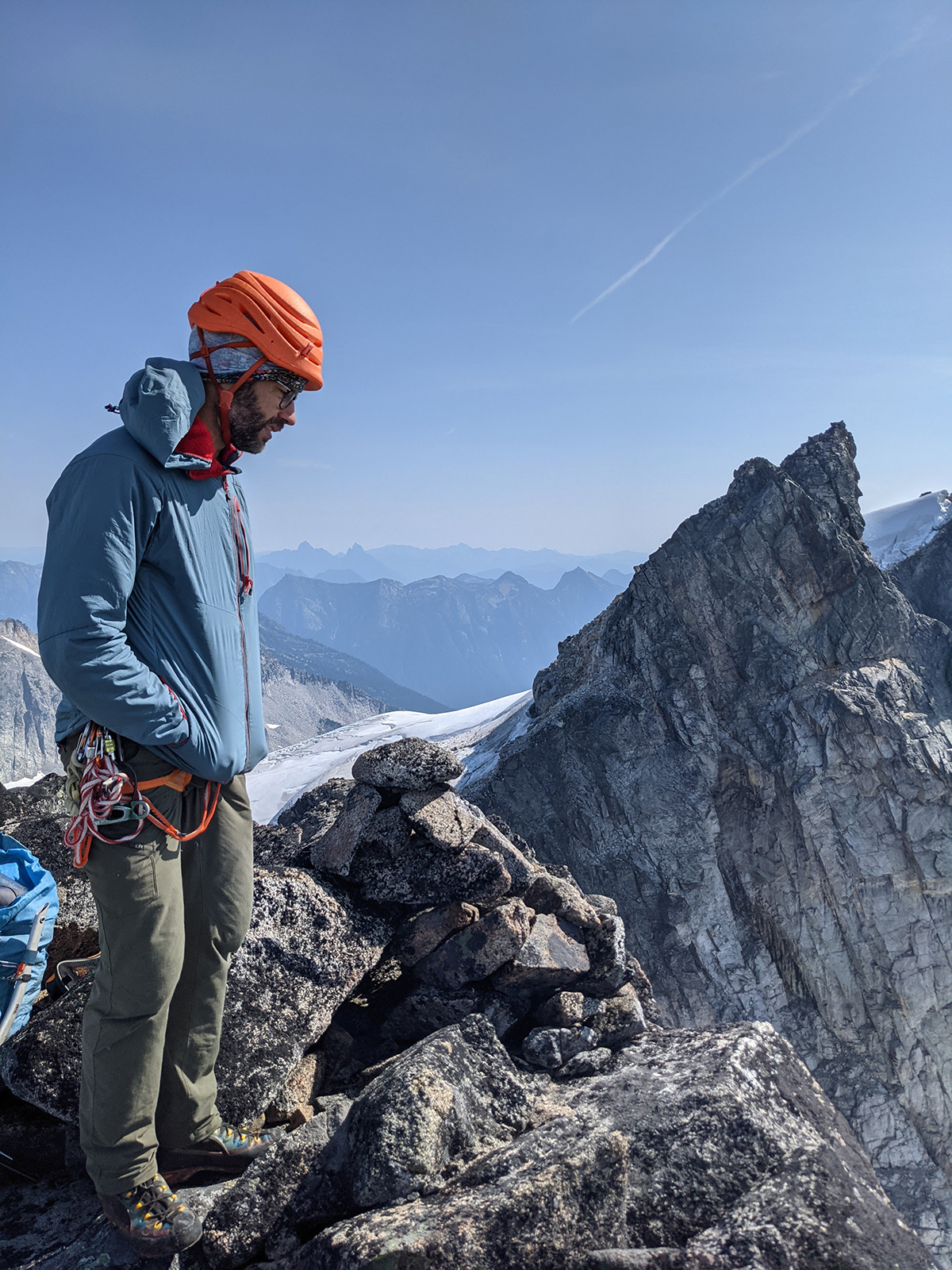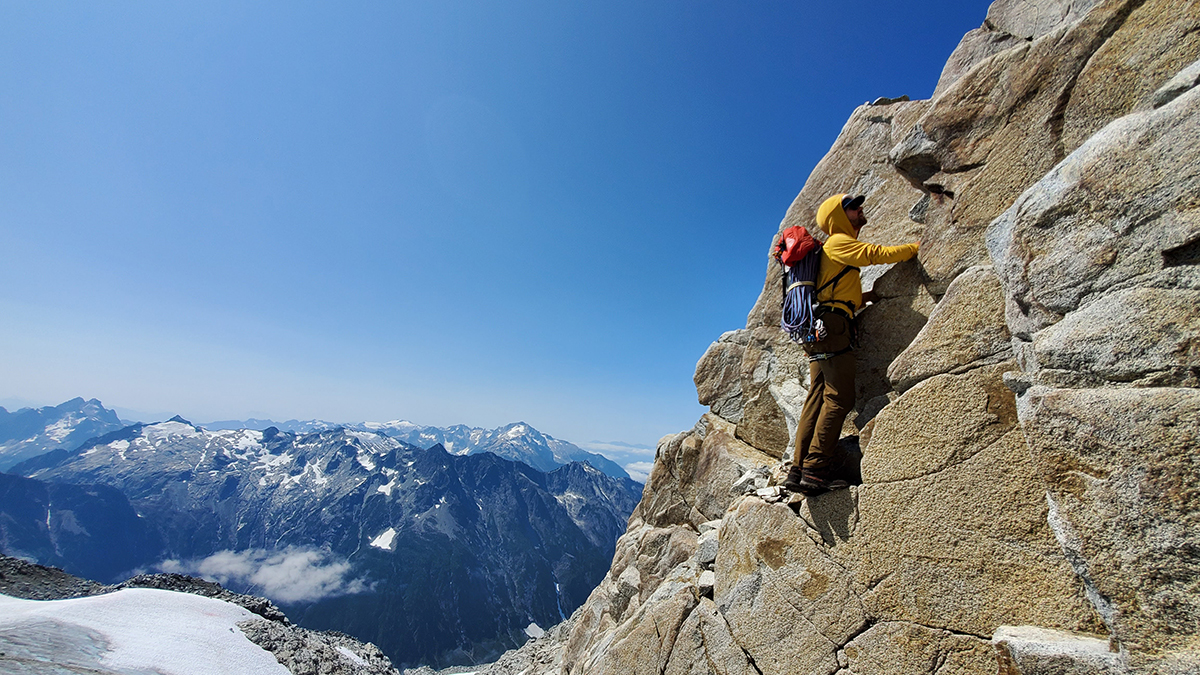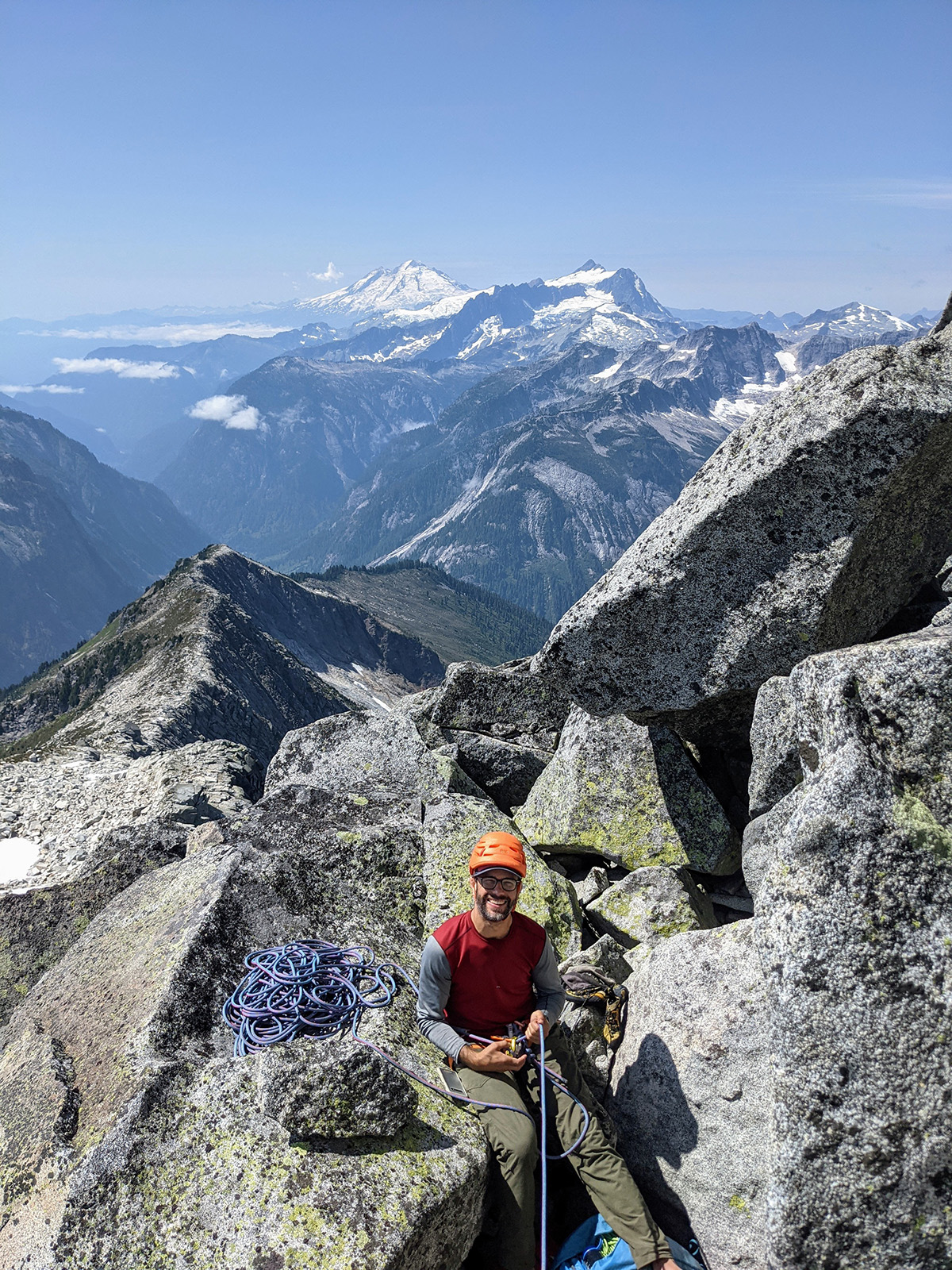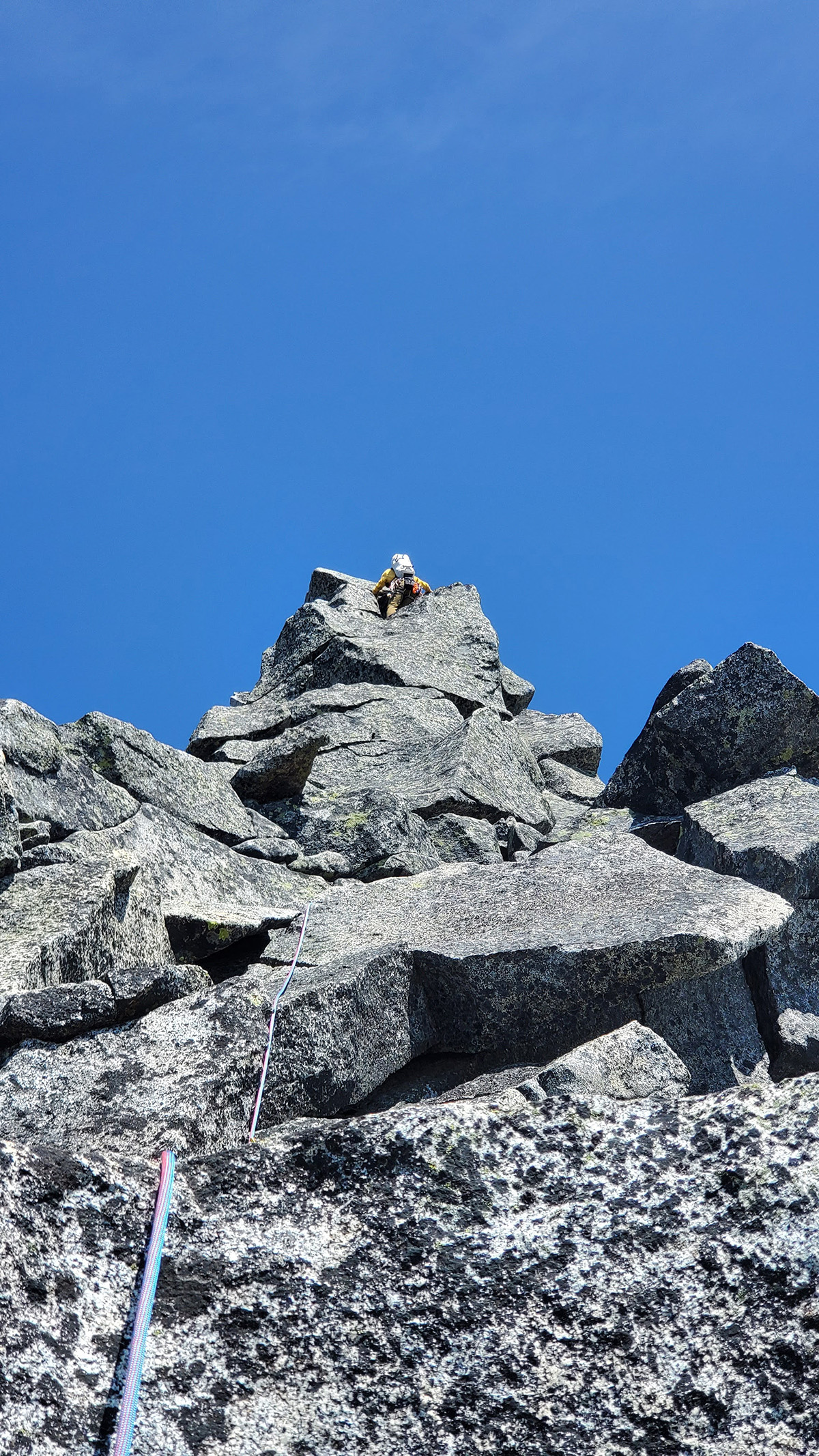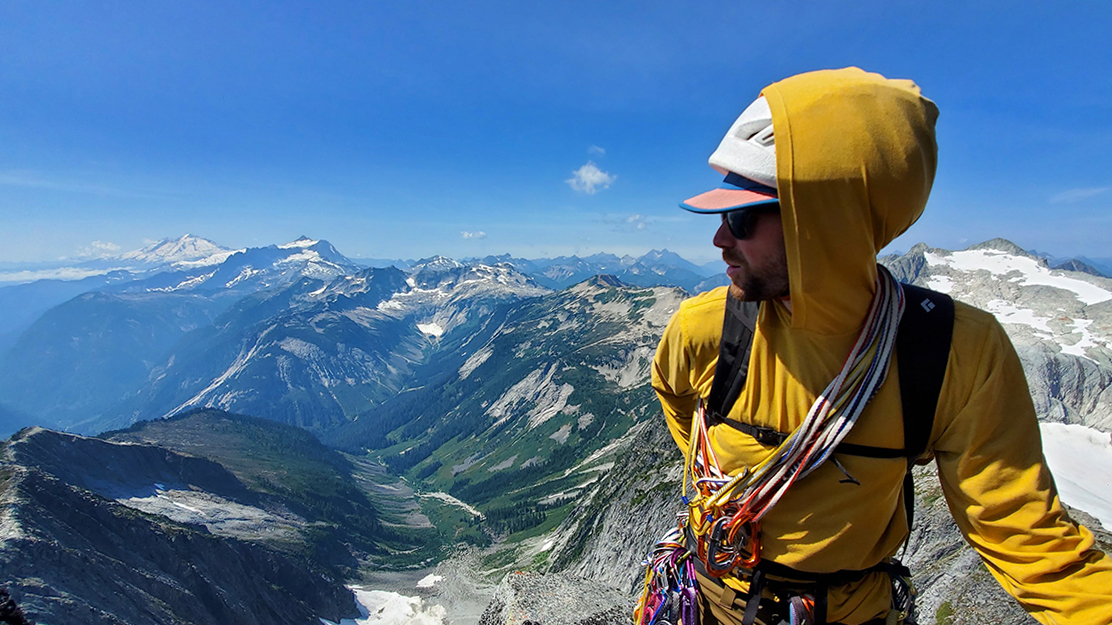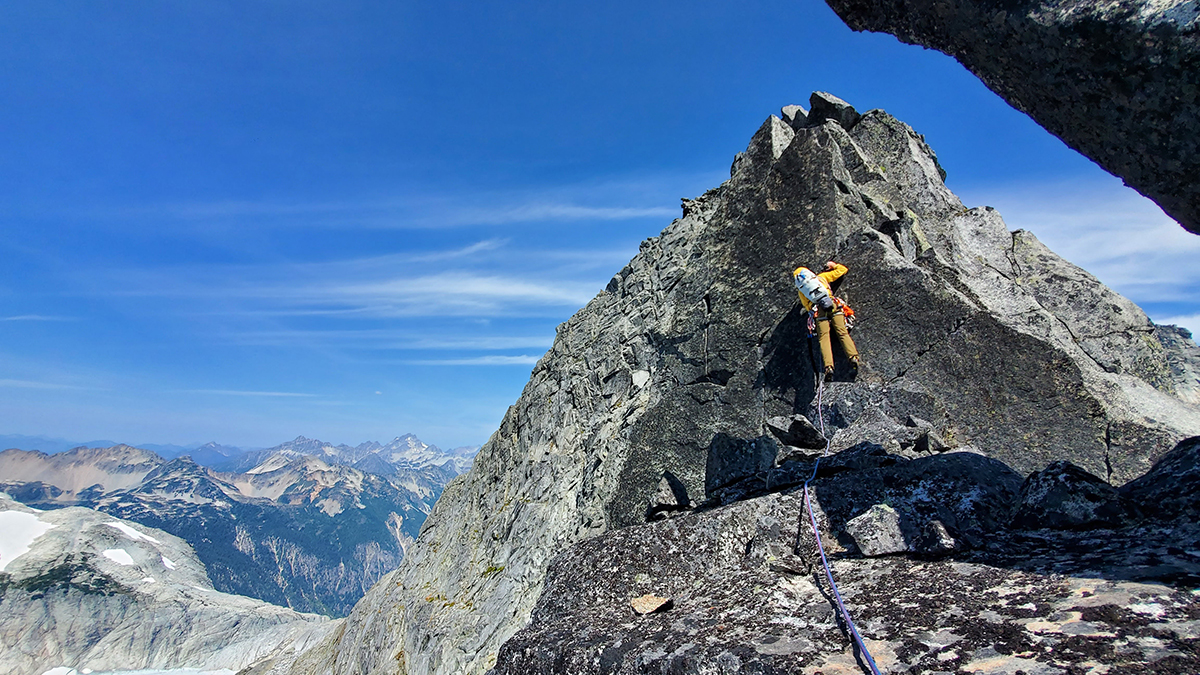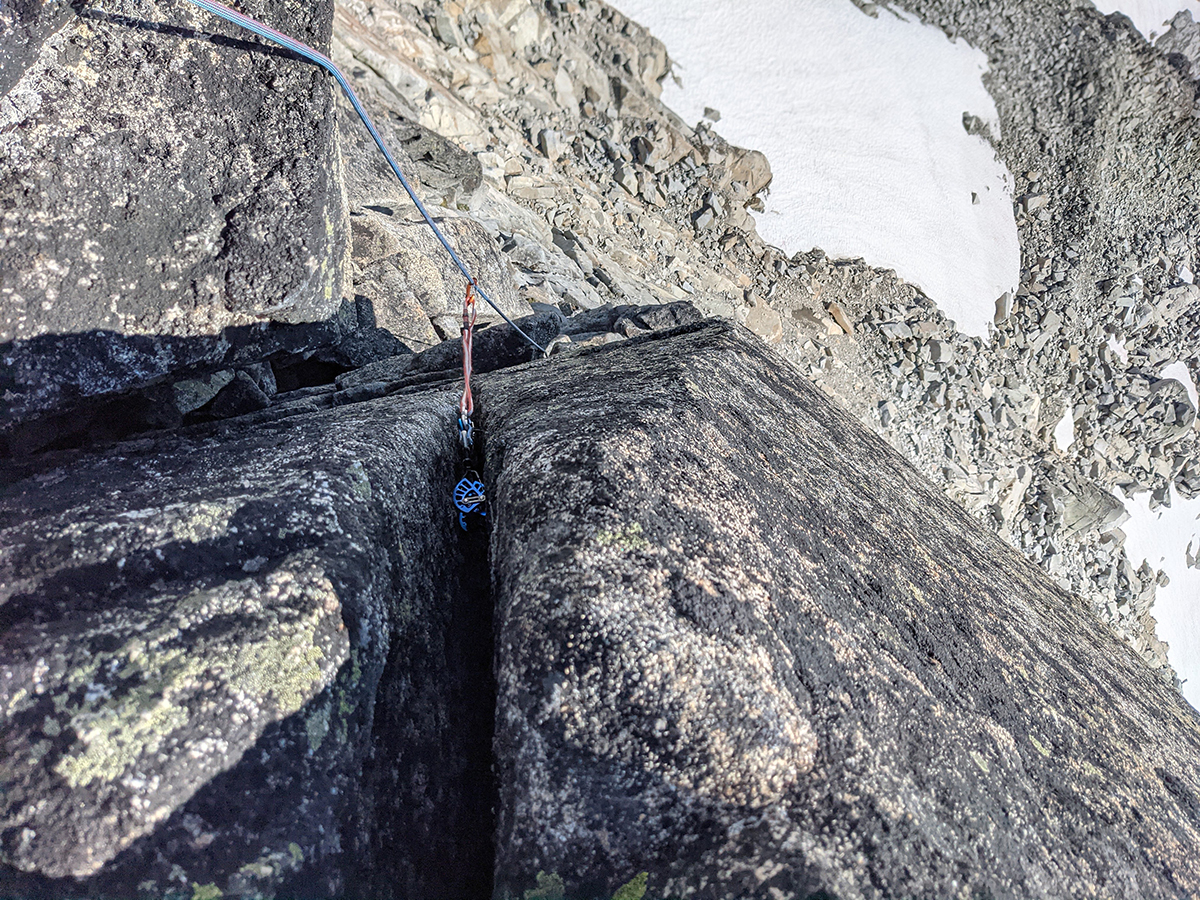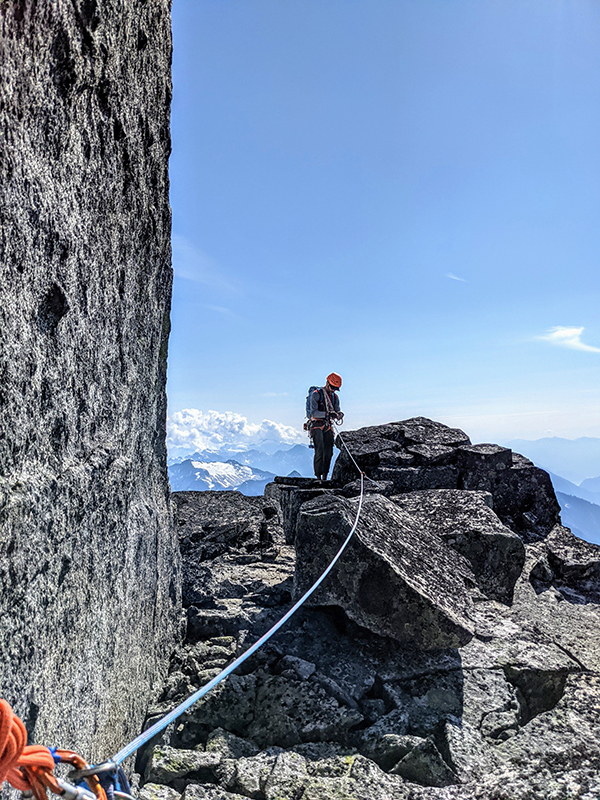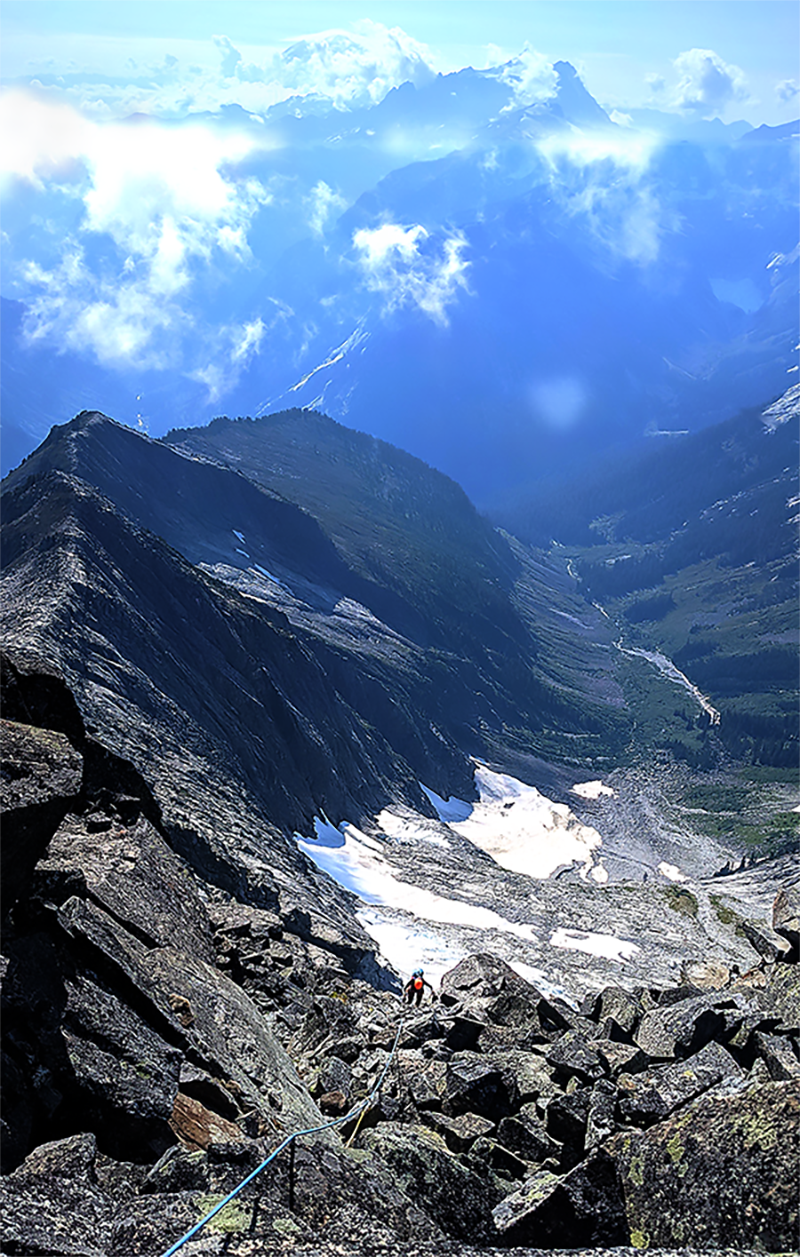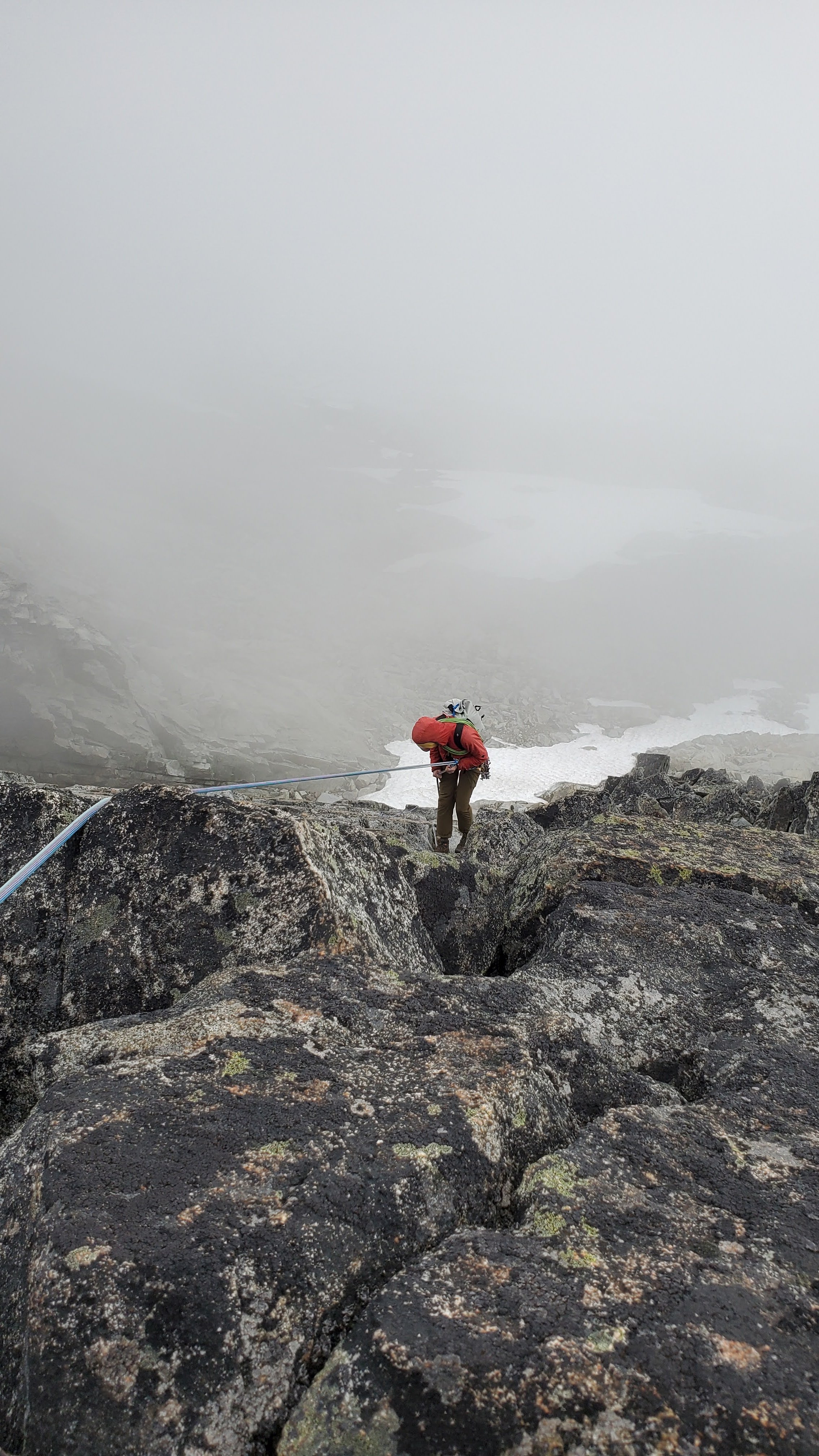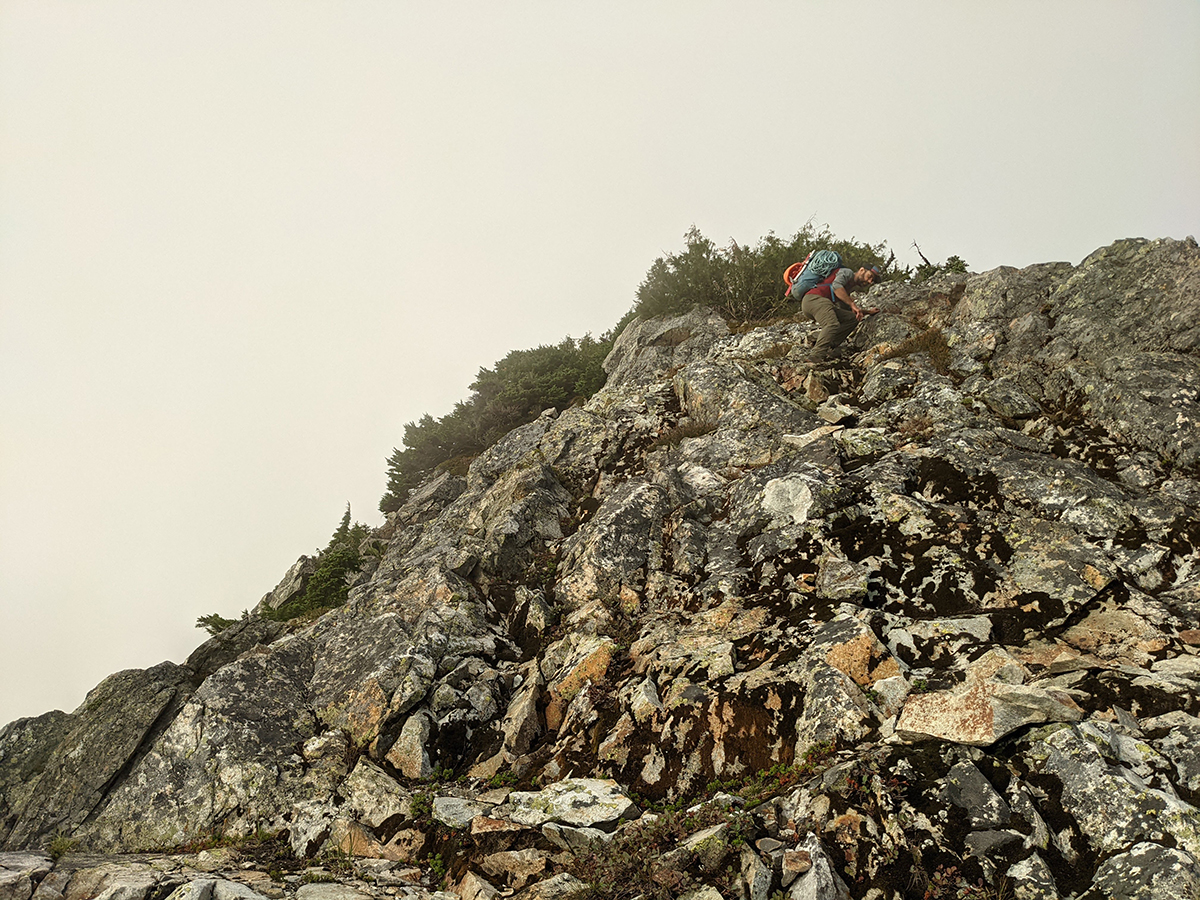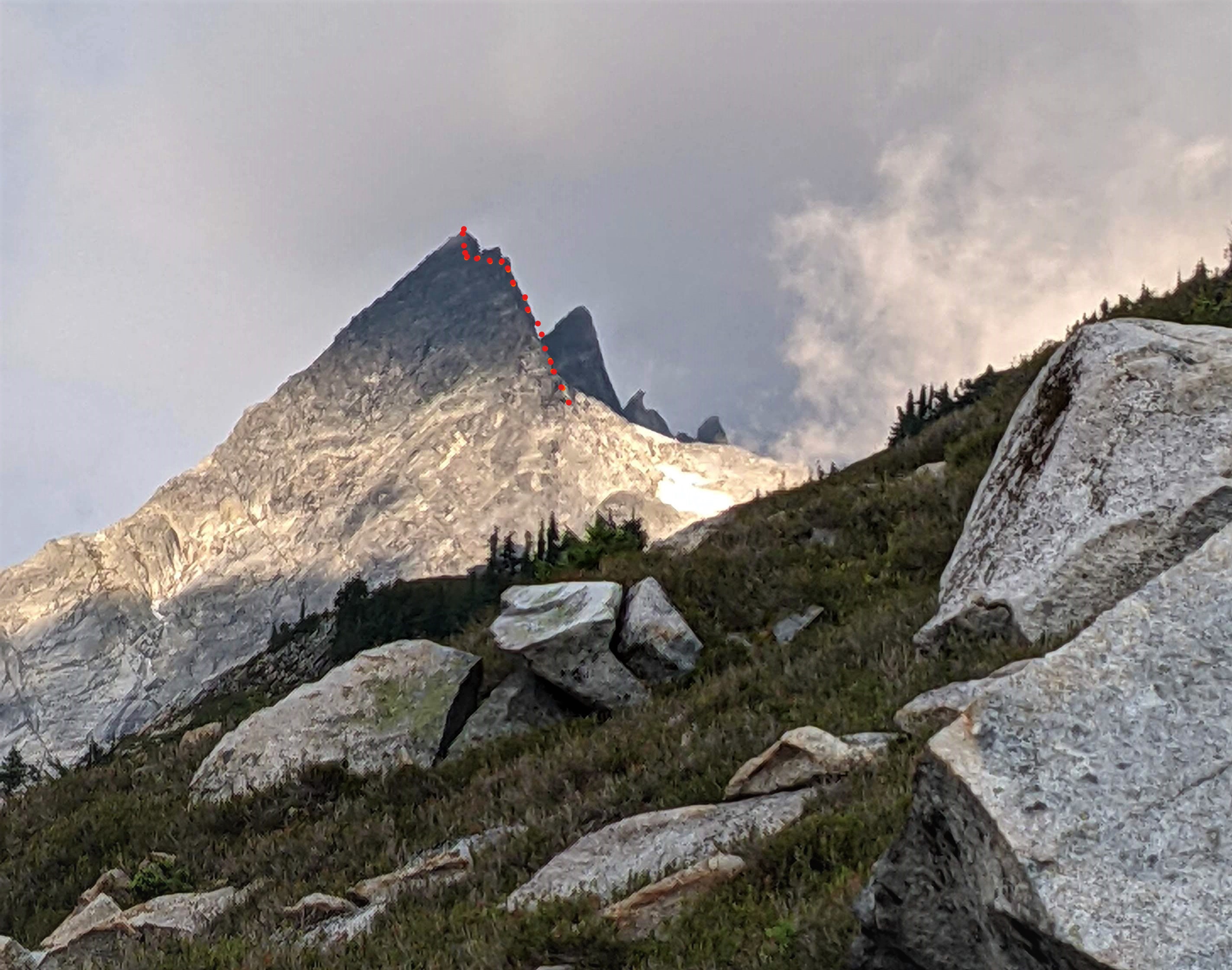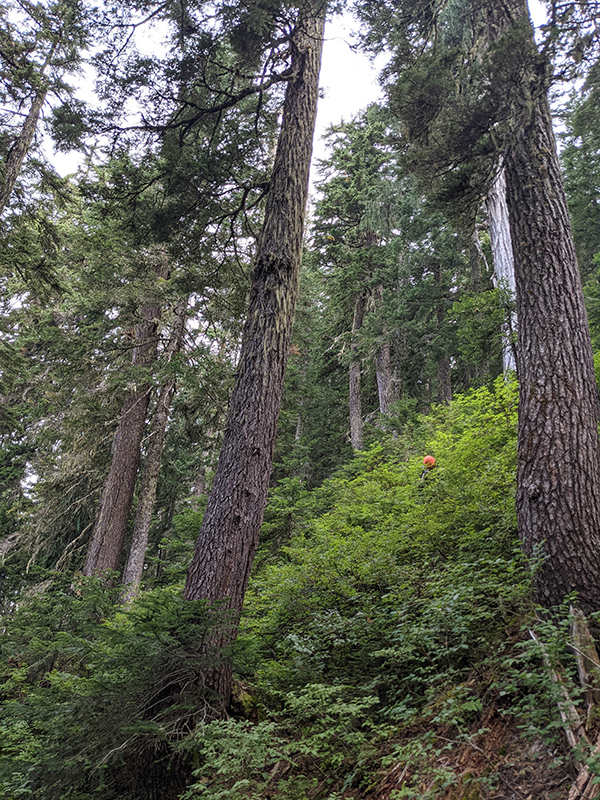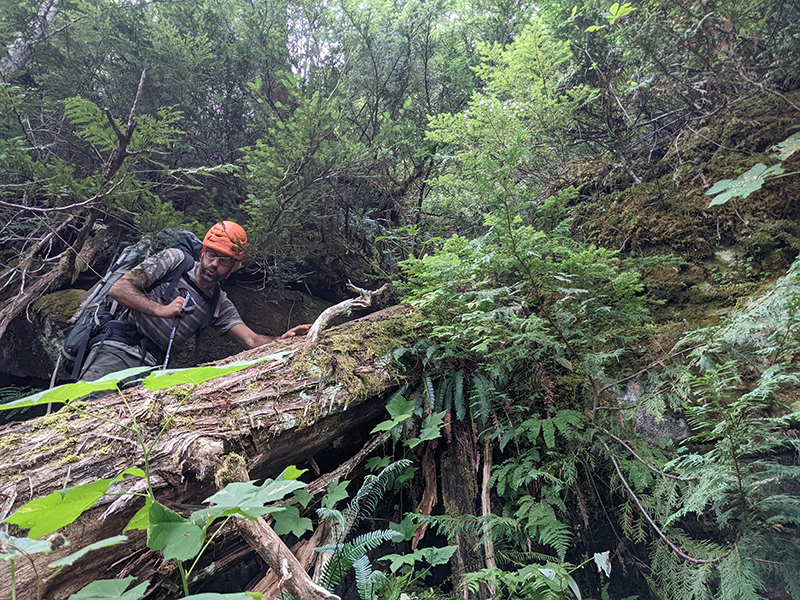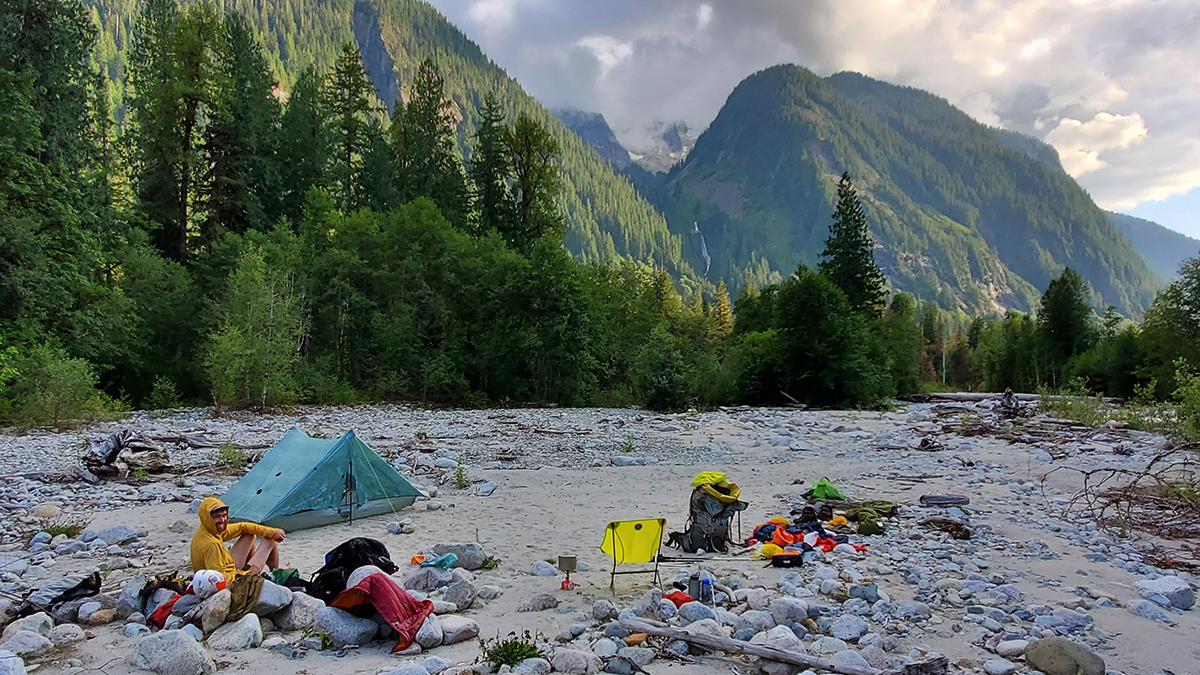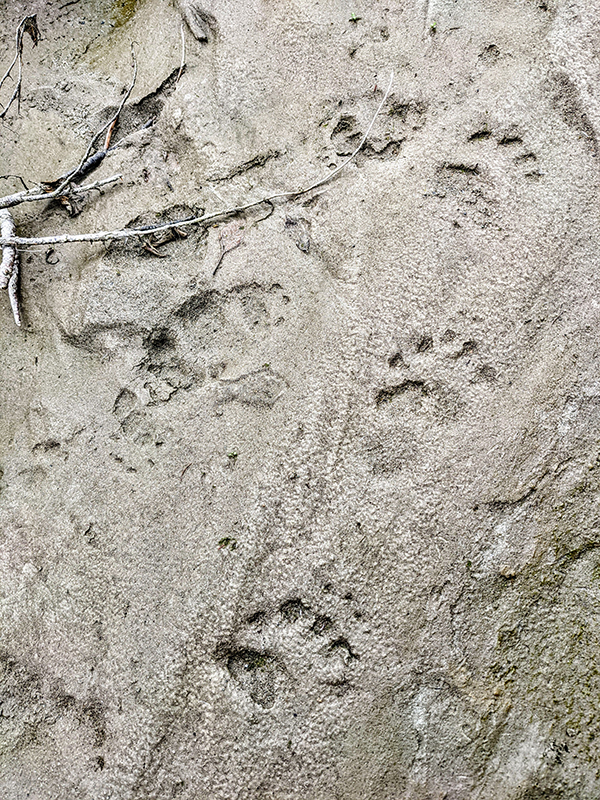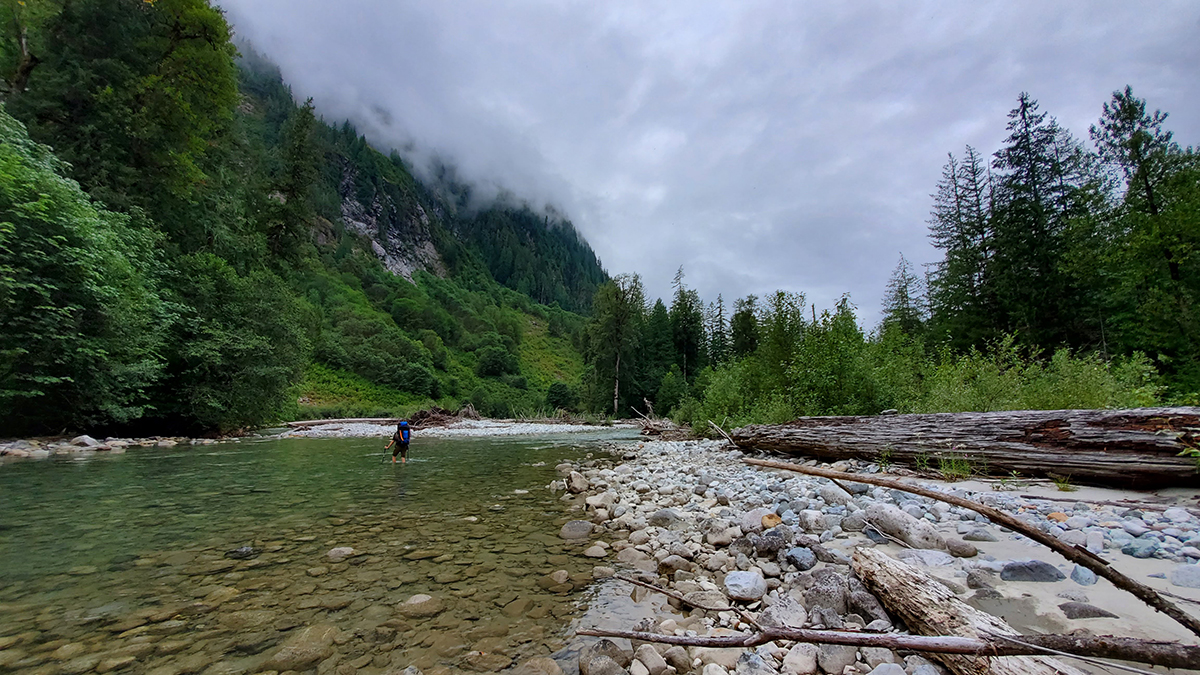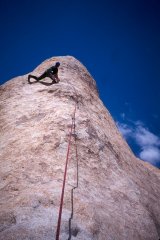Leaderboard
Popular Content
Showing content with the highest reputation on 09/06/21 in all areas
-
Trip: Stuart Range - Stuart Range Traverse Trip Date: 08/30/2021 Trip Report: I was Initially a little hesitant to write this report as it was certainly nothing groundbreaking, I don’t really have any super helpful beta and it just kinda felt like I was stroking my ego. Anyhow, here is a short report of beta I wish I had for the traverse. I'd also like to echo that this is basically a long dry sidehill. If you are expecting a bunch a great climbing, think again. It felt like a dangerous hike. The other day I climbed the Stuart Range Traverse over about 31 hours, including a 7ish hour nap near Prusik. I decided to start on the W-ridge of Stuart via Ingalls and out to the Snow Lake Trail. This is the straightest line on the map, and that appealed to me for some reason. Thankfully my friend Alastair was generous enough to shuttle me back to my car the next day. Thanks bud! The first crux for me was getting over to the east side of Sherpa. It seemed that one with a rope could easily rap over the other side of the summit and continue on their way, unfortunately I didn’t have that luxury. I chose to down climb the S couloir a little ways, and then follow a ledge system around the mountain to the east. This worked out in the end, but was time consuming and a bit circuitous. The next crux for me came at Argonaut. In classic fashion, I had only gathered just enough beta (literally just a picture looking up the S-face) to not fully epic, but not quite enough to know where I was going. I opted for the first gully (pictured below) up to the ridge, hoping for straightforward traversing to the base of the S-face. I encountered anything but. This side of the mountain consists of an incredible grouping of gullies, towers and fins. While striking, it makes for slow arduous travel. I later learned that other solo travelers had dropped low down to approach the face straight on. This would probably be faster/less stressful, but not nearly as cool. I eventually got where I needed to go. Getting off of Argo was definitely the most stressful part, and the spot that I really wish I had a rope. I ended up walking down to a 2-bolt 1-pin rap anchor, and down climbed from there. This bit was loose, slabby and just no fun. While not necessary, a rope here would be really really nice, especially after all the terrain you’ve already covered for the day. This spot also seems to seep earlier in the season, so a rope might be required most of the year. I believe there is a rap/downclimb route to climbers left that may skip it. More downclimbing on better rock took me down to the basin. A small snow patch below Argo provided a tiny trickle of water for me to fill up with. If It wasn’t for this, I would have only had one liter for the rest of the traverse. The rest of the traverse is mostly walking unless you stick to the ridges. The snow free walk off of D-tail is chill and cairned right now. I’ll certainly be taking this route in the future for getting off D-tail late season. There is a small glacier at the pass between Boola Boola Buttress and Lil A. When I hiked by, there was standing water between the dirt and ice. This may be a spot to fill up, but I didn’t look too closely at how nasty it was. GPS track found HERE Here's a photo dump for inspiration Gear Notes: 60m 6mm tag line, Dyneema sling for harness, Reverso + Locker would be a perfect rap kit. Minimum 3L water storage. Good music to keep you company. Brought rock shoes but never used them. Trail gaiters are $$$! Approach Notes: Choose your own adventure2 points
-
Trip: Mt Thomson - West (solo) Trip Date: 08/28/2021 Trip Report: Last Friday, my friend and I set out for a two-night trip to the Kendall Katwalk & surroundings. Due to car trouble and Portland traffic, our arrival was seriously delayed and we made camp at just a few miles in from the pass. Long story short, we set about doing our own things the second day and I wasn't at the base of the route till 15:30. I've never lead solo in the alpine before. Between that, my faster-than-expected dwindling water, and the hideous start time I had very strong "turn around" thoughts happening. But eh! I'm not above bailing on a few nuts if need be. Route goes up left skyline in pic above, mostly. I did it in 6 pitches, pitching out the very first short bit that's normally simul'd or solo'd. Great climbing! The hardest move IMO is the very very first one. Stepping off the first real belay ledge and getting into a chimney. My 40 meter rope barely worked, resorting to doing dumb shit like extending the anchor every now and then to get the rope to reach. Though movement was great, it was hard to enjoy because I was in such a hurry and thinking about rationing my water. Methodical climbing interspersed with dizzying handiwork to take down/build anchors and the occasional gulp. I was soon climbing by head lamp, resigned and in less of a hurry, and only the last pitch fully independent of the sun. Those summit views!! Thirsty but happy. The descent down the East ridge was mentally taxing. Nothing like wading through stunted conifers, grabbing onto them, leaning far looking down, and seeing only bottomless black before trying another likely dead-end. Compass and map were very useful. I did 3 raps. Found anchors the first two; for the last I left behind a locker and some cordellette. Note: if you find an oval locker up there that says "compromised"... it's not, that's just how I mark my gear. Drank a ton of water at the basin, then made it back to camp (saddle above Ed's lake) where friend had made my bed 1:15 and thankfully was sleeping, not worrying. Lovely hike out the next day! Gear Notes: Metolius blue to BD blue, tricams, many nuts, DIY 60 liter backpack (shout out to Stitchback gear!). Could've been a bit lighter. Approach Notes: What's with those weird ass rocks with star-like patterns?1 point
-
Trip: Northern Pickets - Mt. Challenger Middle Peak & FA of SW Ridge of Challenger 5 (Peak 7,696) Trip Date: 08/18/2021 Trip Report: Northern Pickets, image pulled from publicly accessible Google Book Preview of Cascade Alpine Guide, Vol. 3. The SW Ridge of Peak 7,696 is the righthand skyline. Fair use intended. TL;DR: Climbing partners Joe Manning (manninjo) and Joseph Montange ventured up the wild and rugged Baker River valley in mid-August 2021, seeking a shortcut into the Northern Pickets. After several days of travel, we climbed a very fun, new, five pitch, 750', 5.7 route on the Mount Challenger massif, the Southwest Ridge of Peak 7,696 (aka Challenger 5). Baker River Mandatory wading on day 1 starts several miles upriver Time to go to the beach! It’ll be fun: miles of sandbars and loads of deep blue swimming holes. Wading up the river in tennies. Getting to curl our toes in the sand. Sounds promising as a way to approach the remote and reasonably inaccessible Picket Range. Relaxing, beachy-type vacations are not my norm, so the Baker River seemed like the best of both worlds. Get the summertime water fix AND have an adventure scoping out the “direct” route into the Northern Pickets. The approach, documented in the 1968 Tabor and Crowder guide, has no record of folks actually going all the way in that way in the last 50 years. I’m sure some folks have, only to be swallowed by brush and never seen again. Mike Layton wrote in 2006 that John Roper “thoroughly sandbagged” him and Wayne Wallace on their approach to Spectre Peak by suggesting the Baker River. Following “six hours to travel a mile and a half along the Baker River we bailed. Ahead were three more miles of rain, brush, and swift water followed by a 5000-ft climb to the ridge… after our eight-hour false start, we dragged our soggy asses and 25-lb packs to the Hannegan Pass parking lot to restart the trip.” Pioneer Ridge (center-right) and the confluence of Bald Eagle Creek and Baker River For our part, we wanted to push beyond the Pioneer Ridge version of the Baker River approach and continue up the river, to the confluence of Picket and Mineral Creeks. From here, a spur ascending all the way to the Mt. Challenger massif would provide an escalator into the alpine. In fact, after all the beach time, we’d probably need to burn off some of those beach-induced calories. In all seriousness, there’s really no easy way into the western side of Northern Pickets. For a fit and competent party, stocked with full climbing kit and several days of food, Easy Ridge, Whatcom Pass and Peak, Eiley Wiley, even carrying over Fury all take at least two days. Sometimes fast and light parties get to Perfect Pass in a day for a two-night blitz of Mt. Challenger. But if you want to do something on the west side of Spectre, Phantom, Ghost, Crooked Thumb, anything on the south side of Challenger, it's two days just to get there (and two more to hike out). It was with this knowledge that we set off up the Baker River, hoping to find the equivalent of the Northwest Passage into the Northern Pickets. While we may not have found quite that, we did get to spend several days in one of the most rugged, wild, untrammeled and primeval wilderness areas this side of Alaska. The fact that access started less than a 90-minute drive from home was remarkable. The sheer quantity and apparent quality of the granite cliffs spilling off the sides of Pioneer and Mineral Ridges is mind boggling. It’s a beautiful looking mix of Index town walls, Squamish, Darrington, Yosemite, name any notable granite bigwall area. Were it not for a lack of trails and fixed anchor ban in the park, this zone would be a serious destination. As it exists today, it's worth admiring the incredible views every step of the way in. Just don’t forget to watch your step along the way. For folks who find off-trail travel “not so bad,” the stats are compelling. It's less than half the distance of any other way into the range, and less than half the elevation gain. There is no penalizing elevation loss. The approach lacks the objective hazards (e.g. icefall traversing around Whatcom Peak) and subjective hazards (e.g. exposed, loose scrambling over Whatcom or across the Imperfect Impasse) one would find coming in from other directions. The Baker River is a late season approach - the river needs to be low enough to regularly ford and wade. Most of the river walking we did was shin to knee deep. A pair of low top mesh approach shoes worked perfectly to hike in and out of the river. We got waist deep in the river once or twice, though that may have been avoidable. Make sure you line your pack with a garbage bag or other waterproofing. Sections of mandatory bushwhacking punctuate the river walking There is unavoidable brush, including some that registers as “BW5” on the Cascade Brush and Bushwhack scale. As with most off-trail approaches, the bushwhacking was far worse going in than coming out. Only a handful of times did patience grow thin and tempers flare due to frustrating travel conditions. Another dead end in the brush led Joseph to remark that “it wouldn’t be an adventure if there were no doubts.” At this point, with the hour growing late on the first day, we were having some serious doubts about the viability of the approach. After a breather and channeling the power of positive thinking, we made it through the worst of the brush and found ourselves a mossy camp in open forest next to a brook and several large boulders. With full packs loaded for climbing out of a base camp, it took about the same amount of time to go in this way compared to past experience with the more-frequently documented approaches. The crux of the approach, encountered on day two for us, was the wooded spur above the confluence of Mineral Creek/Baker River and Picket Creek. The wooded spur with approximate line and color showing slope angle It starts out innocuously enough. Low angle, brush-free walking past ancient cedars the size of skyscrapers, some well over 15 feet in diameter, soon gives way to steeper and steeper hillside. In what could be the toughest 2,000 feet of elevation gain anywhere, you’ll fight insanely thick brush, mostly saplings and huckleberries, all at a gradient of over 30 degrees, while dodging cliffs including a significant band at about 4,000 feet elevation. Helmets and dirt-ponning may feel necessary to descend safely. Steep huckleberry Typical brush thickness on the wooded spur Several cliff bands are hidden in the brush of the wooded spur Perhaps the effort overall is greater going off trail, though that is going to vary individual to individual. Climbers with their brushmaster degrees, good route finding skills and smaller, lighter packs could conceivably make it to the Challenger 4/5 col or Phantom alp slope camp (or pretty close) in a single big day via Baker River. We broke out of treeline on the afternoon of our second day, hiking into a thickening misty fog. Wonderful camping exists there on grass patches among the heather fields next to perfect 250 gallon tarns. Bring a water filter for the tarn water. Camping on a natural grass tent pad next to water around 4,900 ft Our third day, we woke up to driving rain - not the forecast we hiked in with. It broke into a light drizzle by midmorning and up the alp slope ridge we went, reconning for a higher camp. By midday, an updated forecast gave us a limited window to climb the next day only, August 18th. Chance of showers returned the afternoon of the following day, August 19th. Being well provisioned for several days of rock climbing, the change in weather was disappointing but we’d have to make due. Resigned to the revised forecast; Mineral Mt. in background As I’ve learned in the Pickets, 20 or 30% chance of showers is pretty much 100% chance of rain and low-to-no visibility. We ended up moving camp on day three just a half mile further up the ridge, to a larger patch of grass with an even deeper little tarn and mystifying views of Whatcom Peak, Mineral, Shuksan, Baker/Kulshan and numerous other mountains. We elected to leave base camp there on the ridge around 5,200 ft and go light above. Camp 2 on the ridge, Whatcom Peak in the mist and Perfect Pass at center right We had big (for us) ambitions for our week, yet somehow even the best-laid plans seemed to get waylaid by weather and slowed down by river crossings, vine maple, cliffs, huckleberry, and route finding. Southwest Ridge of Challenger 5 (Peak 7,696), 5.7, 5 Pitches, 750’, Grade II Rock climbing can be just plain Type I fun. You’re outside, with good company, in good weather, using your brain and body to briefly overcome gravity, dancing with the minerals, having a jolly ‘ol time. For whatever reason, granite especially lends itself to this kind of climbing. Joseph contemplating existence on the summit of Mt. Challenger's Middle Peak After scrambling Mt. Challenger’s Middle Peak on day four, Wednesday morning, August 18th, and considering different options for more climbing, we circled back to the south face of Challenger 5 to scope out some pretty neat looking rock. The granite was white to dark with a golden burnt orange in places, peppered with blocks, flakes, and large chicken heads. Fun scrambling to contour back west under Challenger 5's south face Anywhere else these cliffs would be stacked with moderate trad lines. We contoured all the way around the south face until there was nowhere left to go. The southwest ridge dropped off down the imposing west face. Above, a distinct ridgeline ambled up towards the summit. Belay at start of route The route started from a broad, jumbled, and blocky ledge system roughly where the seasonal snow line of the SW ridge ends and the more black, lichen-stained rock begins. If you were hiking directly up the ridge from below, it might be possible to add another pitch for fun, but we cast off from the highest “scramble accessible” point. Climbing on pitch 1 The first pitch went up slabs, followed by a left-facing corner with a laughably fun 5.6 hand crack. Above the corner, a good stance on a ledge set up a short finger crack to another ledge. The rock was exceptionally solid and remarkably splitter, with bomber gear exactly where you might want it. Topping out pitch 1 Starting pitch 2; camp, approach ridge, and Baker River all lower left The climbing went for four more pitches like this, ledgy yet exposed ridge climbing punctuated by fun crack segments. Every roughly 40 - 45m pitch ended at a spacious belay ledge with a slingable horn or solid crack for gear. Views and position on the peak were something to behold. Climbing on pitch 2 Pitch four was the standout, with an improbable and slightly intimidating step right onto the exposed face after a short offwidth pillar. A horizontal traverse with a few hundred feet of exposure led to a straight up crack system culminating in another perfect hand crack, which started at red camalot and ended with a good little stretch of near-vertical number 3 jamming. A final mantel ended on a flat ledge big enough to park a bus on. Awesome exposure and jamming on pitch 4 Huge belay ledge at top of pitch 4 The final 60m pitch cut hard left, off the ridge and onto the west face via an unmissable ledge system. A blocky and slightly loose gully led directly to the summit, with the headwaters of the Baker River 4,000 feet below nipping at our heels and Shuksan and Kulshan swirling in the clouds to the west. Final climbing to the summit As soon as it came in, our weather window was on the way out. Within 15 minutes of arriving on top we were getting engulfed in the mist. We’d left our axes and crampons at the base of the route, and not knowing there was a scramble route off the peak, we elected to rap the south face from the summit and contour back to our gear. In hindsight, had we carried glacier travel gear, we could have descended to the north and potentially gotten back on the glacier, climbed back up to the col, and returned that way. In any case, two raps with two ropes got us off the steep terrain. We retrieved our gear from the base and headed back down the ridge to our 5,200 ft camp, arriving just in time for an incredible sunset as the clouds broke once again. A view of our route from the approach ridge Descending on the approach ridge Back at camp Deproach With the chance of showers in the forecast, we felt good about two summits, a new route, and three nights camped out on an incredible ridge. Now all that was left to do was to reverse miles of steep, trailless wilderness back to civilization. 40 degree huckleberries on the descent Finding the "secret passage" through a major cliff band; we were prepared to rappel, yet managed to avoid it on the way down We camped at the beach for our final evening, near the confluence of Bald Eagle Creek and the Baker River. There was enough sand to walk around barefoot and relax, taking in views of Scramble Creek falls and the North Ridge of Mt. Blum. Surprisingly, someone had camped there in the days we were up high and had left a fire pit, complete with charred logs. One might think the novelty of wading down a river would wear off by the last day of the trip, but surprisingly it didn’t. Out the way out, we knocked over a handful of cairns we made for ourselves on the way in. The only other sign of people we saw was the fire scar and some fishing line at the final campsite, which we packed out. It'd be great to keep it that way for the future. My opinion is this approach is destined to remain in obscurity when “easier” approaches exist, but it is a truly direct and viable way in to the Pickets. Having the right attitude about brush would help immensely. Walking in the river beat the heck out of the alternative Take only pictures, leave only footprints In the days since, I’ve been dreaming about the walls back there, packrafting part of the deproach, scheming about another trip back into the wilderness of the great nearby. It’s adventures like these that, for me, climbing in the Cascades are all about. Many thanks to Joseph for the great company, partnership, use of photos, and willingness to try something different. Gear Notes: Extra shoes for wading, rock climbing gear to #3 camalot, crampons/ice axe for glacier travel Approach Notes: Starts from the Baker River Trailhead. See Tabor and Crowder's "Routes and Rocks in the Mt. Challenger Quadrangle" and Beckey's "Cascade Alpine Guide, Vol. 3" for more approach details.1 point
-
My light setup is an RX100, picked because it shoots well RAW. I have a compact case that I strap to my pack shoulder pad and have a webbing loop over my head clipped to the camera. Thus easy access and secure. My main kit is the Nikon D7100 with a 17-35, 2.8 lens. Heavy, but really, there is no substitute for good glass.1 point
-
1 point
-
Thanks for writing up a nice report on my favorite valley in the state. I headed up to explore Picket Creek yesterday, and was very surprised to see the first boot print I have ever seen on my trips up the Baker above Pass Creek. That approach ridge is a little harder than it looks from afar, eh? I've only been up it to about 6,000 ft, so good on ya for pushing it through to Challenger. Once you learn where not to go, you'll be surprised how fast you can get to the toe of that ridge. Glad to hear your enthusiasm for all the unclimbed walls in there. There is a lot of variety just waiting for an adventurous sort. Also, if this was your first trip up the Baker, incredible job! I didn't get nearly that far on the first couple attempts.1 point
-
Climb: F.A. "The Washington Pass Traverse"-Silverstar-Vasiliki. (VI 5.9+) Date of Climb: 8/24/2005 Trip Report: Washington Pass Traverse. First Ascent Mark Allen and Mike Layton 8/24-8/26. VI 5.9+ Mark and I finally completed a dream of ours we’ve talked about, but never found the time between the two of us for the past three years It’s gonna be hard to write this up since my memory is terrible and I don’t really know how to begin. I guess I’ll start from the beginning... Day One: East Ridge of Silverstar V 5.9+ We had 4am wake up at Mark’s unibomber cabin in Mazama, downed some eggs and coffee, shuttled a bike to Silverstar creek and dove the shaggin wagon to the Cedar Creek trailhead. It was pitch black out Mark realized when his petzel “weaka” barely illuminated his shoes as he tied them. It was calm and the stars were blazing. The Northern Lights pulsed across the night sky. Truly spectacular start to a long long trip. There’s a horse trail that leaves the Cedar Creek trail about 100 yards from the start and is basically a wooded spur off the east ridge of Silverstar. We took the steep trail about 4 miles of uphill grind wondering the whole time, “where the hell does the east ridge of Silverstar start?” Our hearts sank for the 1st of many many many times when we fist saw the beast, the East Ridge of Silverstar, put up by Childs in the early 90's. It’s only seen a handful of ascents and we had zero beta. Sweet. The climbing started TWO MILES from the summit of Silverstar along an exposed ridge with lots of scrambling and climbing. Our first two raps occurred after about an hour of climbing. We could see the ridge lead up steeply to junction of ridges that block our view. The summit must be just behind Nope, our hearts sank again after we pulled off some really spooky exposed soloing when we saw the summit another full mile away up an enormously long and confusing ridge with an unbelievable amount of sub peaks and high points. Crap, our noon summit estimate is out the friggin window Lots and lots of soloing up the ridge (up to 5.6) brought us to the base of the Silver Horn. We tried a new route up the east ridge, but we kept blanking out in 5.10 land in tennis shoes and a long way to go still. More raps and some traversing (below Berdinka/Thibaults route on the middle ledge section...looks great ) brought Mark and I to a steep chimney system that we soloed using full stemming between walls. Very exciting. We topped out on the Silver Horn, rapped back onto the ridge and wondered where in the hell folks were going on this ridge. All our raps were new ones, so we assumed that the people who were doing the regular E.ridge route avoided the silver horn. Who knows? Route finding is full on. Hours later of continuous climbing (to 5.9+), rapping, mind blowing exposure, dead ends, heart sinking moments of “crap, we gotta find a way through this ), and making sure we stuck to the ridge to keep a clean line (unsure where reg e.ridge goes) we reached the summit. We had one hell of a time getting around huge gendarmes that block passage on the entire width of the ridge (a major problem on this climb) and there were lots more sub summits than we could have possible anticipated. Also there was fresh snow and frozen moss to keep us on our toes for when we were on the north side of the ridge. Wasting no time (we took zero breaks during the climb on all 3 days) we dropped down to the saddle below the main summit. 11 hours of climbing, 13.5 hours from the car. The way we went on the east ridge was a grade V 5.9+. Full on climbing all day long. Time to bivy. We melted snow and filled our long dry bottles. It got down to 28 degree that night with a brisk wind, so our bivy pads of 8mm rope didn’t make too comfortable of a sleep. Luckily the whiskey I snuck in my pack helped. Then I burned my sleeping bag on the stove and had somehow lost my tape, so I had to ridge a down tourniquet with some perlon. Feathers float about as we slept on and off. DAY TWO: West Peak Silverstar-Old Woman-All the Wine Spires V 5.9+ It took a huge amount of willpower to get out of “bed” as it was still in the high twenties when we got going. Mark chugged his water the night before while I hoarded mine. I started to make some more water when I got about 8 ounces before the stove quite. Fuck. Mark shoved his water bladder full of snow hoping it would melt against his back during the day. It actually worked The “easy” west peak of Silverstar took way longer than we expected and we had to rap a few times b/c our crampon less tennis shoes didn’t really want to stick to the steep frozen dirt snow. The frozen dirt snow proved a constant pain in the ass. Then getting to the Old Women took longer than we thought. But when we got there and peered down the abyss 400 feet straight down to dizzying and impossible looking array of wine spires our hearts really sank. Both of us wanted to quit. Go home. Bail. Screw this, we’re gonna die. But we rapped off anyway on our nth rap we had to set up with the 50 feet of dwindling tat I brought. We traversed around to the East Face of Chablis and did the beckey route. Great fun. 2 pitches, some runout steep face climbing, and some simul climbing to the wildly exposed summit. We looked across to Pernod spire. How the hell are we gonna get up this? The east was sheer, the west was a huge ridge we’d have to rap forever to get to, and the south face rose impossibly up from the col. But the s.face did have cracks. I gulped and told Mark I’d give it a go. I climbed extremely timidly up the vertical wall wondering at every moment if the cracks would continue and if I fell would my gear hold. I pulled the roof and ran outta gear. Mark came up and finished the pitch up a great handcrack/layback. We had no idea it had been climbed before. More rapping, downclimbing, and climbing up a horrible horrible chimney/gully system took Mark and I to the North Face of Chianti Spire. My lead. This pitch was hands down the scariest, loosest, worse, most run-out piece of shit pitch I’ve ever climbed. The rock was “blow your brains out before you go fucking insane” shitty and scary. Mark called it “a life or death” lead. I was glad to be done. More rapping. One more to go Mark did a terrifying pitch up the south face of Burgundy from the notch. An exposed fingertip traverse with 3 foot tall pedestals that we so loose you HAD to only push down with your feet. Unfortunalty those were the only footholds, and I stepped on the 1st one the wrong way and it started to totter over and fall, so I hooked it with my toes and tipped it back into place so I could 2nd the traverse. Two more pitches took us to the top. I forgot what Mark called this "new" route but it was also 5.9+ (see a trend?). Four double rope raps and we were at Burgundy Col. 11.5 hours of climbing. Out of water once more. Mark and I were excited to be done and go home. Mark said he only had two days cuz he had to work the next day. But then Mark said something that changed everything “Yeah, I gotta work Saturday morning, tomorrow. Bummer” To which I replied, “Mark, today is Thursday” We had another day. There was still more to climb We took stock of our food situation...we had enough for a small dinner of snacks, and a couple bars for the next day. No water though. We bombed down burgundy col east toward Chianti and found trickles in the ice. Thank you whiskey bottle It was the only thing small enough to collect our water. With full bottles we slogged back to the col and had another minimal bivy. It was great Day Three Vasiliki Ridge IV 5.9+ Vasiliki Tower starts it right off from Burgundy Col. We encountered some unbelievable shitty rock on this climb (from the south east ridge) and I had yet another hate filled vomit inspiring I’m gonna fucking die lead. My cams for the 1st part were probably more dangerous in the rock than running it out since when the inevitable ripped out of the rock if I fell, the block that would come down would kill Mark. Good times. Then I began gardening. All Mark saw was a waterfall of dirt pour down 75 feet up. He had the cam I needed in the belay too, so I doubled up in the same spot and went for it. Thank god it went too. Yet another 5.9+ The Acropils, Charon and Ares tower went down way easier than we thought and our hearts almost didn’t sink when we headed for the “final bit,” Juno-Jupiter tower. Jupiter was the before Juno and an exposed but easy crack took us to the top. Then our hearts sank. It was impossible to get to Juno tower. We tried a lot of crazy shit to make things go over the past three days, and this wouldn’t go. We had to do lots more rapping and very scary down climbing to the west Long ribs shot down boarded by deep gullies of shit rock and we climbed up rapped down them looking for a way up. By the time we found a way up we were past Juno. We were way outta water and food and getting up the remaining turds of horrid rock seemed so forced and contrived. So we got back on the ridge and finished the traverse . 8 hours of climbing on day 3. Bitch mode was on extreme by the decent, and somehow we found the energy to run the last section (the trail to the car) of the Silverstar creek decent. Mark got the privilege of biking to the car (made it back in less than ½ hour ) which I wanted b/c I get bored sitting and waiting. All told we did 24 high points/summits and 28 rappels, took 3 full days of climbing, and did 4 miles of rock climbing (not including the approach or descent). It was a major traverse of the longest unbroken section of ridge in Washington Pass, thus the name “The Washington Pass Traverse”. We feel confident in our grade 6 rating, and our 5.9+ is a conservative estimate of the pitches of “not quite 5.10 . We needed two ropes and about 100 feet of tat. God only knows how many "pitches" We stuck to the ridge crest as much as possible, dropping off the ridge only when absolutely necessary...sometimes sticking to the ridge too much We had a full rack up to a 3 cam and emptied the rack on several pitches. Future parties can add to this traverse by climbing the E.ridge of the silverhorn, and figuring a way up Juno to the south. We weren’t very sad about not tagging juno, 1/24 of the climb and ten feet from the summit we were on anyhow...not such a big deal for us. We are very happy about the whole thing and will be happy to provide beta, or get beta from past ascensionists of some of the more obscure peaks and routes we climbed. And before you (you know who you are) start bitching and wining and thinking of little things to say to call our bluff, go climb it yourself. Mark and I tried doing this climb in the best style possible, no stashes, carrying everything, no topos execpt for chianti and chablis. We made it up as we went along. Hat’s off to you if you read the whole thing. That’s a feat in itself. Photos are coming soon. Some are really good so please check back. if someone can email me or post a topo of silverstar-vasiliki i'll photoshop in the line. -Mike1 point

